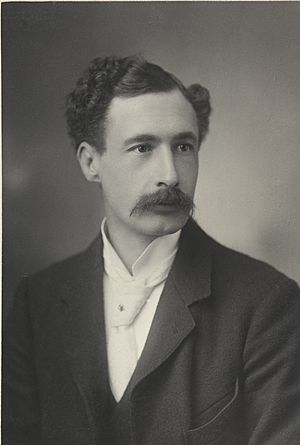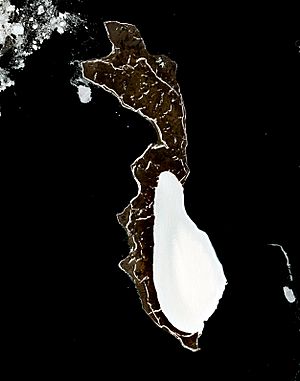Reginald Koettlitz facts for kids
Reginald Koettlitz (born 1860, died 1916) was a British doctor and an amazing explorer of the North and South Poles. He joined two big trips: one to a cold place called Franz Josef Land in the Arctic, and another to Antarctica, which is at the very bottom of the world.
Contents
Early Life and Education
Reginald Koettlitz was born on December 23, 1860, in a town called Ostend. His father was a Lutheran minister, and his mother was English. He went to school at Dover College. After that, he studied to become a doctor at Guy's Hospital in London. Once he finished his training, he worked as a doctor near Dover.
Exploring the World
Reginald Koettlitz loved to explore new places. He went on several exciting journeys.
Trip to the Arctic
In 1894, Koettlitz joined an adventure called the Jackson–Harmsworth expedition. This trip went to Franz Josef Land, a group of islands in the very cold Arctic. On this journey, he worked as both the doctor and a geologist, studying rocks and the Earth.
When he came back to Dover, he brought a polar bear with him! This polar bear is still at the Dover Museum today. An island in Franz Josef Land, called Koettlitz Island, was named after him to remember his work there.
Journey to Antarctica
In 1901, Koettlitz volunteered for another huge adventure. This was Robert Falcon Scott's famous Discovery Expedition to Antarctica. On this trip, Koettlitz was the team's doctor and also a botanist, studying plants. Many of the plant samples he collected are now kept at the Natural History Museum in London.
During the expedition, Koettlitz led a trip across a frozen area called McMurdo Sound. On this journey, he discovered two large ice features. These were later named after him: the Koettlitz Glacier and the Koettlitz Névé. Because of his important work on the Discovery Expedition, Koettlitz received a special medal from the Royal Geographical Society.
Later Years
Later in his life, Reginald Koettlitz worked as a doctor in Cradock, South Africa. He passed away in January 1916 from a sickness called dysentery. His wife, who was from France, also died on the same day.



